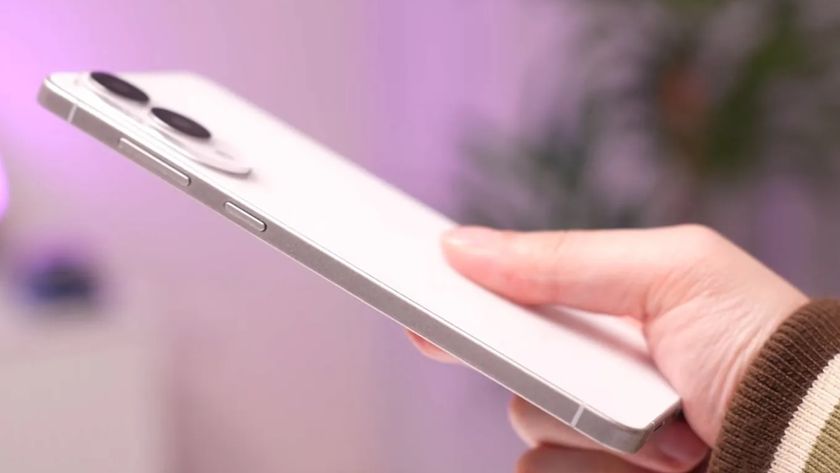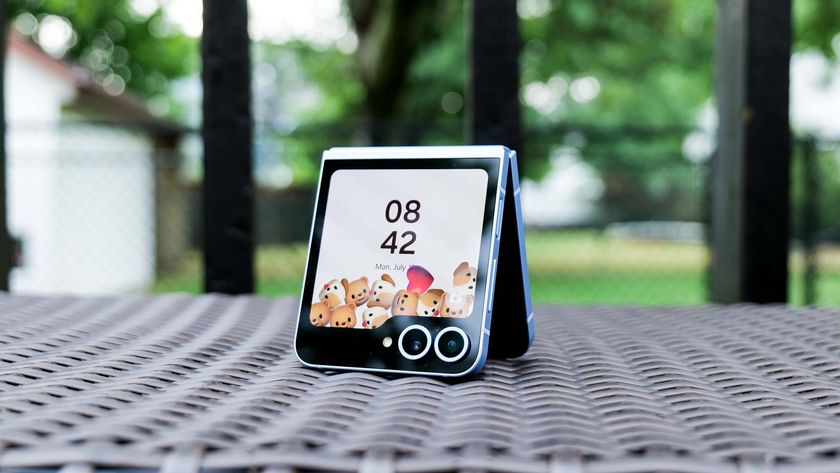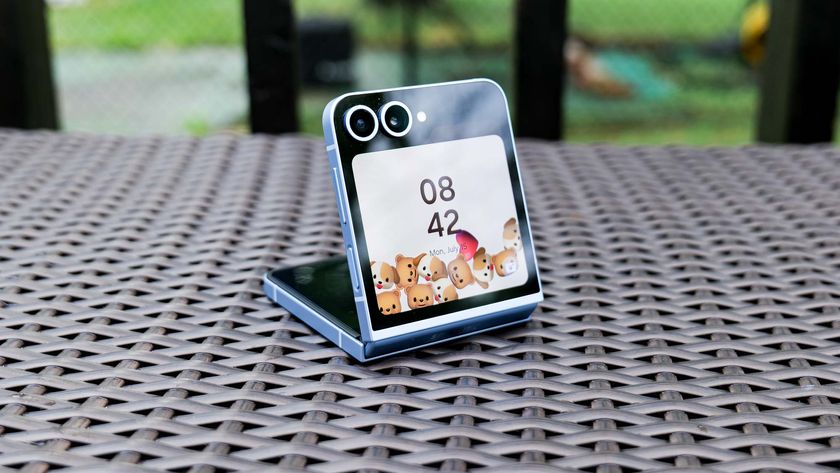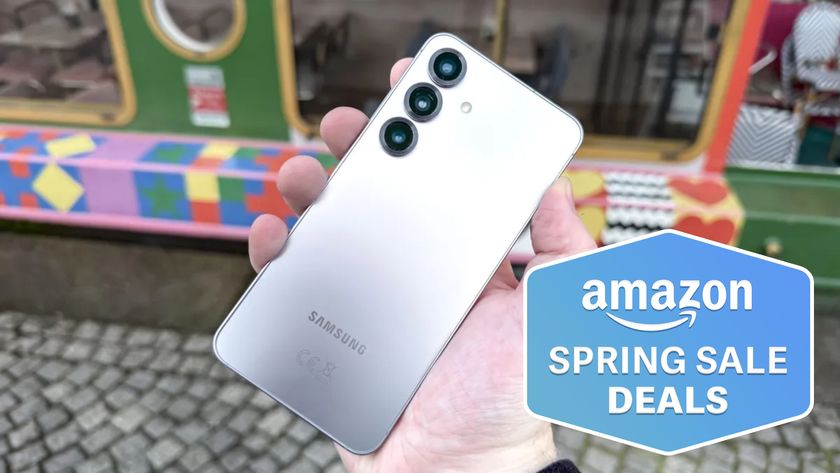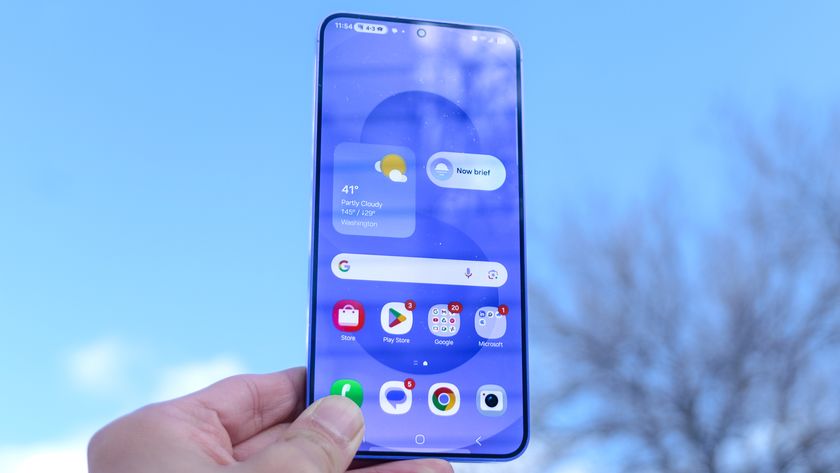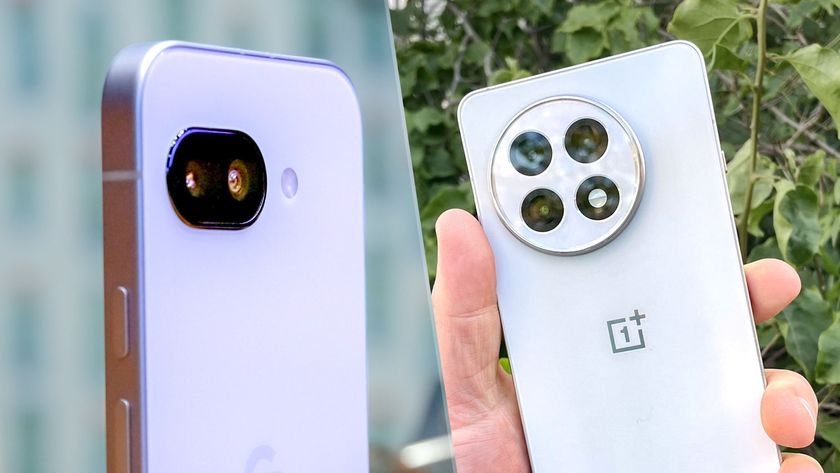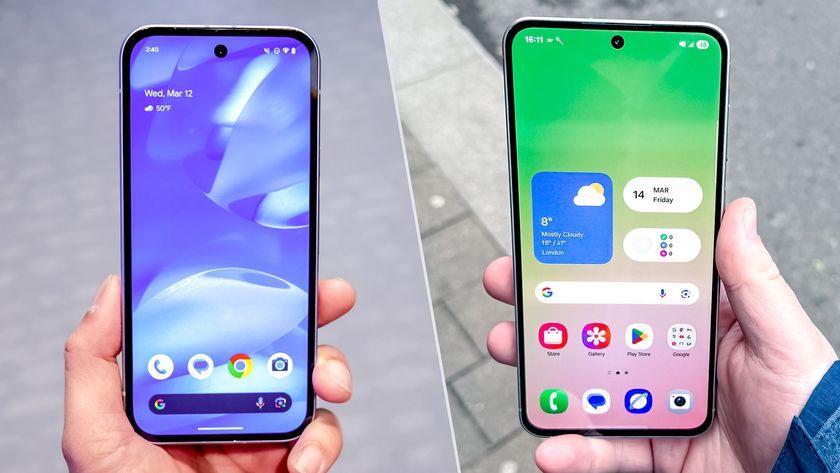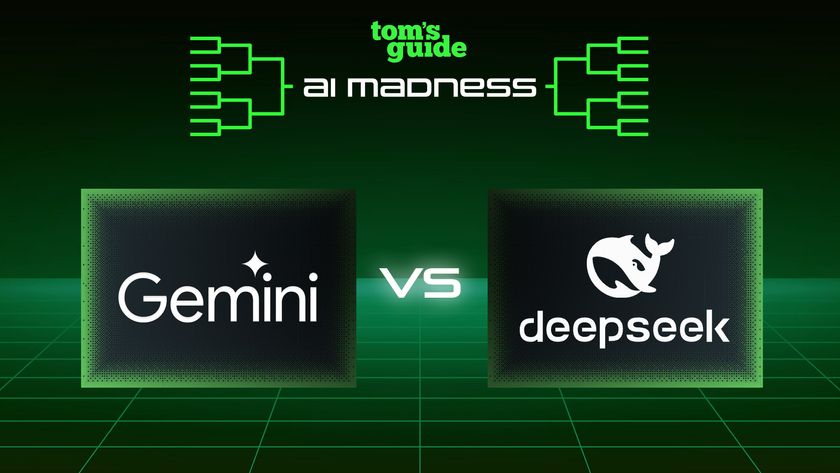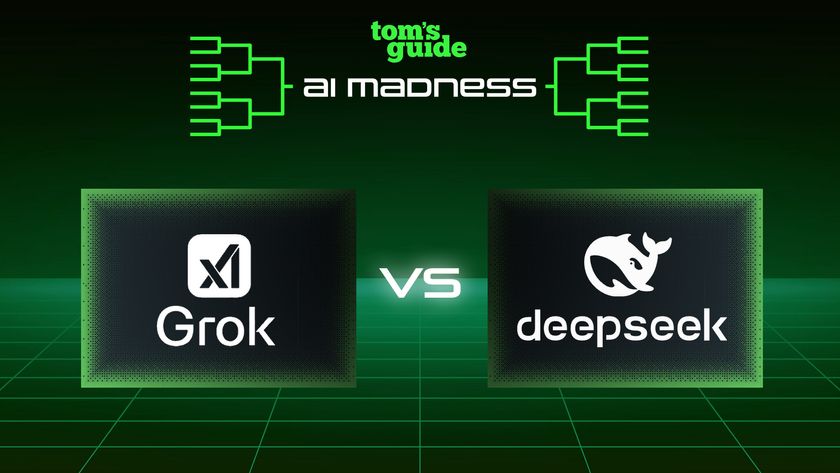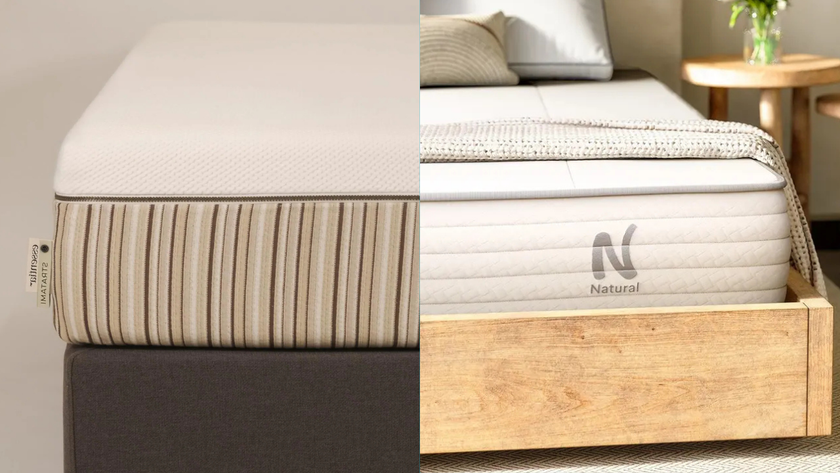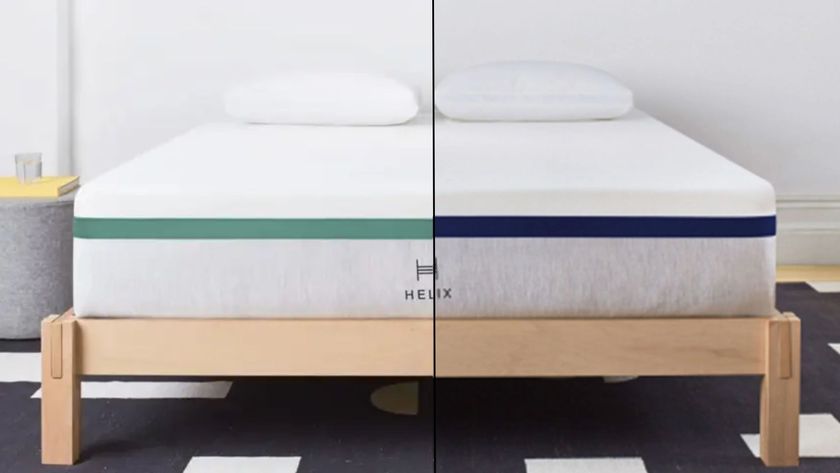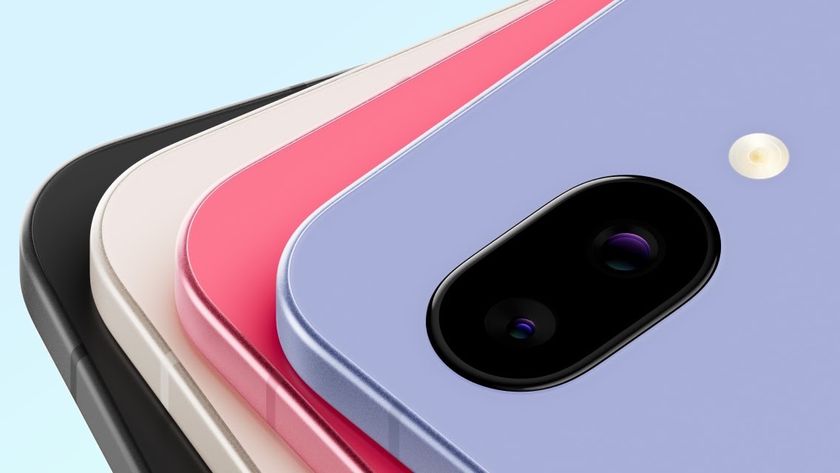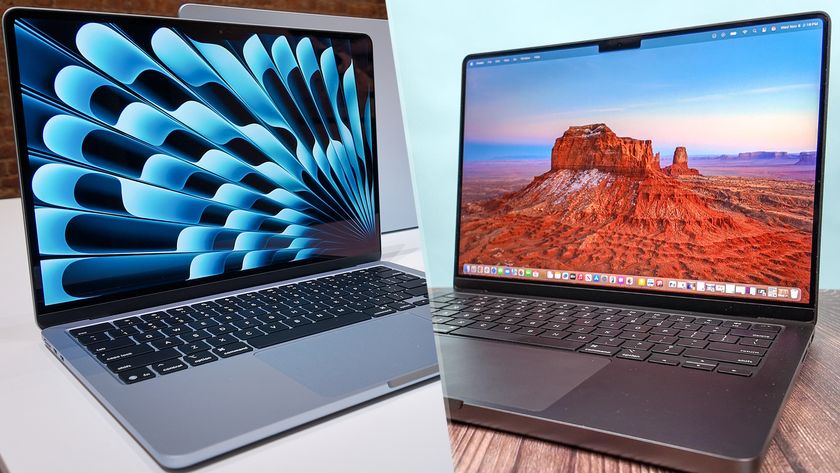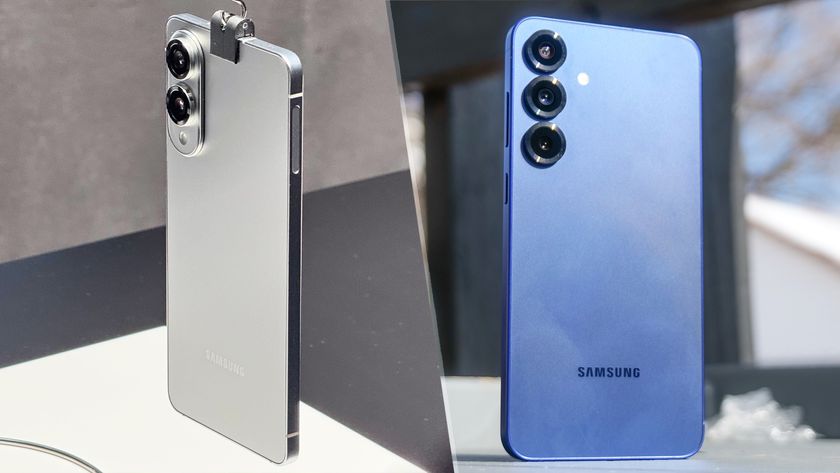Samsung Galaxy Z Flip vs. Galaxy Fold: Which foldable phone is tops?
Portability takes on power in our Galaxy Z Flip vs Galaxy Fold face-off
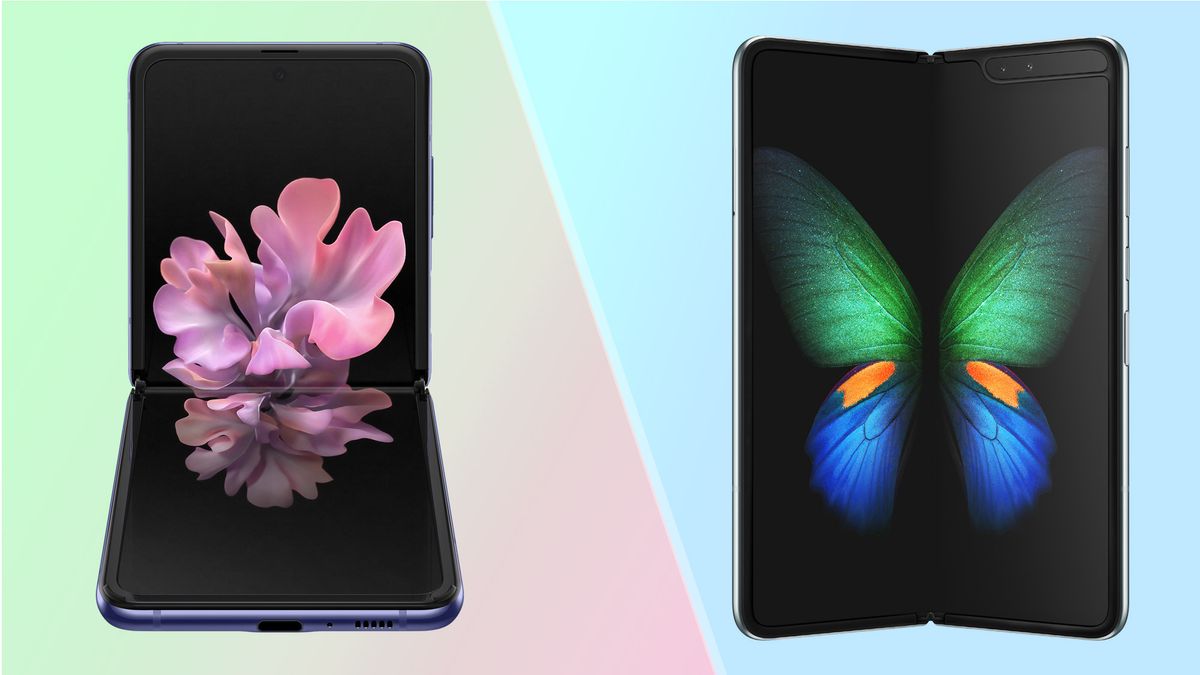
Our Galaxy Z Flip vs Galaxy Fold face-off pits two flagship against each other that are quite different. The $1,380 Samsung Galaxy Z Flip revives the flip-phone design that was so popular a decade and a half ago, and it could be the device that finally delivers a foldable phone that appeals to a wider audience.
But it has some company, in the form of the Samsung Galaxy Fold. That's the first foldable foldable that Samsung rolled out last fall, which morphs from a 4.6-inch candybar phone into a 7.3-inch tablet.
The Galaxy Z Flip and Galaxy Fold represent two very different approaches to foldable phones. Which one best suits your needs? Here's a closer look at how these two phones stack up in our Galaxy Z Flip vs Galaxy Z Fold comparison.
- Galaxy Z Flip vs. Motorola Razr: Which flip phone wins?
- The best phones you can buy today
- PLUS: A folding iPhone could be on the way
Galaxy Z Flip vs. Galaxy Fold specs
| Header Cell - Column 0 | Galaxy Z Flip | Galaxy Fold |
|---|---|---|
| Starting price | $1,380 | $1,980 |
| Main screen size (resolution) | 6.7 inches (2636 x 1080) | 7.3 inches (2152 x 1536) |
| Exterior screen size (resolution) | 1.1 inches (300 x 112) | 4.6 inches (1680 x 720) |
| CPU | Snapdragon 855 Plus | Snapdragon 855 |
| RAM | 8GB | 12GB |
| Rear cameras | Dual: 12-MP main (f/1.8), 12-MP ultrawide (f/2.2) | 12-MP wide-angle (f/1.5 to f/2.4), 12-MP telephoto (f/2.4), 16-MP ultrawide (f/2.2) |
| Front cameras | 10 MP (f/2.0) | Closed: 10-MP selfie (f/2.2) Open: 10-MP selfie (f/2.2), 8-MP RGB depth (f/1.9) |
| Battery size | 3,300 mAh | 4,380 mAh |
| Size (open) | 6.6 x 2.9 x 0.28 inches | 6.3 x 4.6 x 0.3 inches |
| Size (closed) | 3.4 x 2.9 x 0.61-0.68 inches | 6.3 x 2.5 x 0.62-0.67 inches |
| Weight | 6.5 ounces | 9.48 ounces |
| Colors | Mirror Black, Mirror Purple, Mirror Gold (select markets) | Space Silver, Cosmos Black |
Galaxy Z Flip vs. Galaxy Fold price and availability
The Galaxy Z Flip is a step forward from the Galaxy Fold in at least one regard: It's a whole lot cheaper than Samsung's first foldable phone.
Of course, "cheaper" is a relative term when it comes to foldables. The Galaxy Z Flip will still set you back four figures, with its $1,380 price. But that's $600 less than the debut price for the $1,980 Galaxy Fold. If you buy the Z Flip in installments at AT&T, you'll pay $46 a month over 30 months, while Sprint is leasing the phone for $57.50 a month over 18 months.
You can order the Galaxy Z Flip from Samsung, Best Buy, AT&T and Sprint, though the Galaxy Z Flip is selling out. You may have to check multiple retailers before you can find a model that will ship immediately, as supplies of the Galaxy Z Flip are extremely limited.
Galaxy Fold supplies are not so constrained. You can buy the Fold at Best Buy, Samsung and AT&T, where the phone's available for 30 monthly installments of $66.
Galaxy Z Flip vs. Galaxy Fold design
The Galaxy Z Flip and Galaxy Fold take entirely different approaches to folding phones in terms of the placement of their respective hinges. The Fold uses a vertical hinge, so unfolding the handset is like opening up a book, revealing a 7.3-inch AMOLED panel. The Galaxy Z Flip re-creates the flip phones of old — or mimics the Motorola Razr of now, if you prefer — by flipping open on a horizontal hinge to show off its 6.7-inch AMOLED screen.
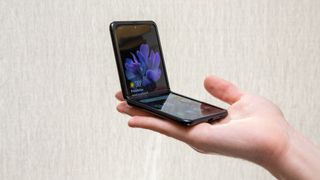
The Z Flip's hinge is also designed to stay open at different angles, much like a laptop, and Samsung has developed a Flex mode that activates when the screen is open at a 90-degree angle from the bottom of the phone. (We'll dive into Flex mode in the special features section of this Galaxy Z Flip vs. Galaxy Fold face-off.)
The different approaches led to very different sizes. Fully open, the 6.3 x 4.6 x 0.3-inch Fold is almost twice as wide and fractionally thicker than the 6.6 x 2.9 x 0.28-inch Z Flip, though the latter phone stretches out taller. The size difference is even more noticeable when the phones are closed. The Galaxy Z Flip can fit into a pocket thanks to the phone's 3.4 x 2.9 x 0.61-0.68-inch frame, whereas the Fold is too bulky to fit into anything other than a coat pocket.
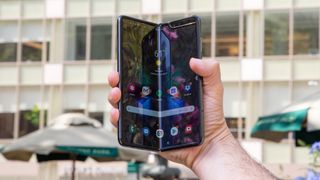
Durability concerns delayed the Fold's launch last year; Samsung added caps to the phone's hinges, narrowed the gap between the device's two sides and added a metal layer to improve rigidity.
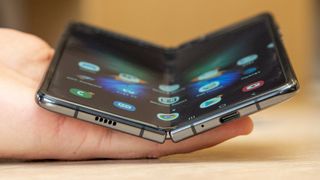
The hard lessons Samsung learned from the Fold's debut may have helped the company refine the Galaxy Z Flip. That phone uses a hideaway hinge, which Samsung claims can open 200,000 times.
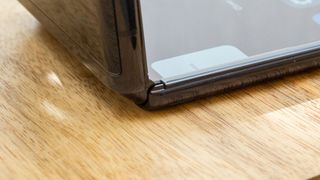
While there's a gap when the phone's screen is fully extended, there's a thin fabric layer designed to keep particles out that might damage the display. Some early tests by other sites have raised questions about the Galaxy Z Flip's durability, so we'll need to spend some more time with the phone before we can say how it holds up to everyday use.
You can get the Galaxy Z Flip in Mirror Purple or Mirror Black, though a Mirror Gold option is available in some countries. That mirrored finish picks up a lot of fingerprints, so carry a cloth with you. The Fold features more-conventional Space Silver and Cosmos Black options.
Galaxy Z Flip vs. Galaxy Fold display
There's a key difference between the AMOLED displays on the inside of the Galaxy Z Flip and Fold. The Z Flip features an ultrathin layer of glass, which lends a more polished feel to Samsung's newer foldable phone.
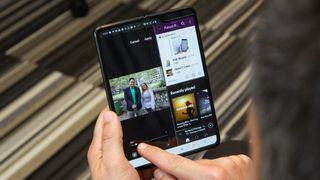
The Fold has a larger external display — a 4.6-inch screen with HD-plus resolution. That's big enough to run select apps without opening the phone, and when you do need the Fold's larger screen, an app continuity feature lets you pick up where you left off on the external display. The Galaxy Z Flip's outer screen, in contrast, is a 1.1-inch strip just wide enough to alert you to incoming calls, texts and alarms; it also displays the date and time.
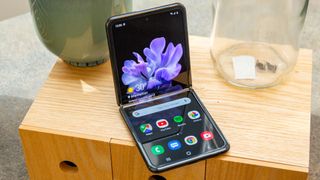
The interior displays on the Galaxy Z Flip and Galaxy Fold are just about equal on color. The Z Flip captures 129.1% of the sRGB color spectrum, in line with the 124.8% we registered when testing the Galaxy Fold. Samsung's original foldable is brighter, though, as the Fold's screen registered 525 nits on a light meter. That's a steep contrast from the very dim 368 nits we saw from the Galaxy Z Flip.
Galaxy Z Flip vs. Galaxy Fold cameras
Samsung takes two very different approaches with cameras on its foldable phones. The Galaxy Z Flip keeps things very simple, with two exterior lenses — a wide-angle and an ultrawide-angle shooter, both with 12-MP sensors — and a 10-MP selfie cam peeking out at you from a cutout in the top center of the phone's interior display.
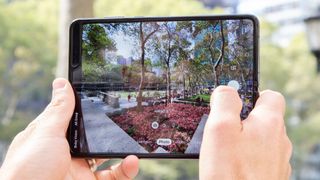
All the extra cameras that Samsung failed to squeeze into the Z Flip apparently made their way into the Galaxy Fold, which offers a total of six lenses. The back of the Fold features a 12-megapixel wide-angle camera, a 16-MP ultrawide lens and a 12-MP telephoto lens. Open up the foldable, and you'll get two front cameras: a 10-MP main shooter augmented by an 8-MP depth camera to help with portrait shots. When the Fold is shut, there's a 10-MP selfie cam staring back at you on the outside of the phone.
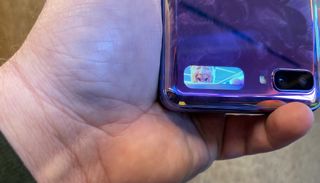
We haven't had a chance to pit the Galaxy Z Flip against the Galaxy Fold to see which Samsung foldable takes better shots. But we have taken photos with both phones, finding that each performs capably, though you shouldn't count on pictures that match what the best camera phones can produce.
The Fold's cameras take colorful, detailed photos; we were particularly impressed with all the detail that the ultrawide-angle lens managed to capture (though there was a noticeable fisheye effect in those shots). Portrait shots taken with the Fold's external cameras resulted in washed-out faces, particularly when compared to the superior cameras of the iPhone 11 Pro Max. Selfies taken with the Fold's front camera impressed, and Night mode shots on the Fold are about as clear as those captured by any leading smartphone.
The Galaxy Z Flip produced some colorful shots, too. In particular, Samsung's algorithms seemed to brighten up a lot of the parts of a photo that other phones left dark — sometimes to the detriment of the Galaxy Z Flip's shot. Portrait shots impressed, even if the Z Flip gets a little aggressive in re-creating skin tones. We'll need to do more extensive testing, but the Galaxy Z Flip's cameras seem capable of handling the many photos its target audience is likely to want to snap.
The Z Flip has one clever photographic trick worth noting. You can take selfies with the external cameras, without having to bother flipping open the phone. Instead, you use the phone's external, 1.1-inch display as a viewfinder. You'll only be able to see a sliver of yourself in the shot, and you won't get to see what the background looks like until you double-tap the Z Flip's volume buttons, but it's a handy way to snap a quick self-portrait.
Galaxy Z Flip vs. Galaxy Fold performance
There's not much separating the Galaxy Z Flip and the Galaxy Fold when it comes to performance. Samsung put a Snapdragon 855 system on chip inside the Fold, which was the most powerful Qualcomm chipset at the time of that phone's release. A new variant, the Snapdragon 855 Plus, has since emerged, and that's what's inside the Galaxy Z Flip. The Snapdragon 855 Plus delivers better graphics performance than the 855 and has a faster clock speed in its prime core.
Samsung packs 8GB of RAM into the Galaxy Z Flip, which is a fair amount of memory, though the Fold offers more, at 12GB. You'll also get more onboard storage with the Fold: 512GB to the 256GB of capacity that comes with the Z Flip.
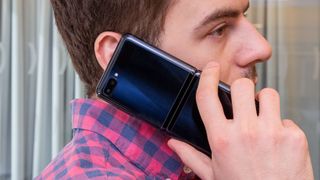
In terms of performance, the Z Flip rides the boost it gets from the Snapdragon 855 Plus to top the Galaxy Fold in the tests we've run thus far — but only by a little bit. On Geekbench 5, which measures overall performance, the Galaxy Z Flip turned in a multicore score of 2,685, just edging the Galaxy Fold's 2,619 result. Graphics testing was similarly close; on GFXBench's Aztec Ruins off-screen Vulcan test, the Z Flip scored 1,124, versus the 1,038 score by the Galaxy Fold.
Those slight differences in scores probably won't amount to any noticeable real-world difference unless you're running some processor-intensive tasks on the Galaxy Z Flip. Ultimately, you can expect either foldable phone to match the performance of the top Android phones of 2019.
Galaxy Z Flip vs. Galaxy Fold battery life and charging
The Galaxy Fold's bigger size requires a larger battery, and Samsung obliges with a power pack that totals 4,380 mAh. (The Fold features batteries on either side of the device.) Because it's more compact, the Galaxy Z Flip has to make do with a smaller battery, a 3,300 mAh power pack.
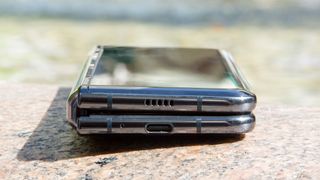
As you might imagine, the Galaxy Fold's larger battery helps that phone last longer on a charge. In our Tom's Guide battery test (continuous web surfing over LTE), the Galaxy Fold lasted a minute over 10 hours. That's about average for a smartphone and the best battery life we've seen in a foldable device. The Galaxy Z Flip's performance disappointed, at least in our initial test. Samsung's newer phone lasted only 6 hours, 22 minutes on our test; the longest-lasting smartphones we've tested hold out for twice as long.
Both Samsung foldable phones support fast charging and offer the Wireless PowerShare feature that's become standard on Samsung's leading handsets. That allows you to place a Qi-compatible device on the back of either the Fold or the Z Flip and charge the phone wirelessly.
Galaxy Z Flip vs. Galaxy Fold special features
The Galaxy Fold seems built for multitasking. App continuity lets you pick up a task you've been performing on the phone's 4.6-inch external display on the larger screen within the device, only with more detail filling up that 7.3-inch display. But the Fold's phablet-sized internal screen can also run three apps at once (provided those apps have been rewritten to support such multitasking).
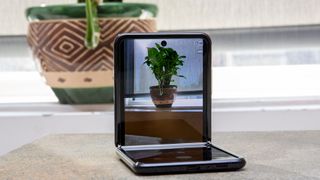
The Galaxy Z Flip has multitasking capabilities, too, though its more slender screen limits you to two apps. Using the Multi-Active Window feature, you can run two apps on top of one another — say, a web browser and a messaging app.
We're more impressed by Flex mode, which lets you run certain apps in split screen when you've got the Z Flip's display partially open. Launch the camera app in Flex mode, for example, and the top part of the display becomes a viewfinder while all the camera controls take up the bottom half of the screen. Flex mode is particularly handy for taking photos, because the hinge doubles as a sort of tripod to keep the camera steady when you set the Z Flip on a flat surface.
The Galaxy Fold shipped with Android 9 installed, and the phone has yet to receive Samsung's One UI 2.0 update built on Android 10. (That's apparently coming in the spring.) The Galaxy Z Flip has no such issues, as it's running the latest version of Android.
Outlook
Assuming you want a foldable phone — and it's still very much an open debate as to whether these kinds of handsets are ready for prime time — the Galaxy Z Flip vs. Galaxy Fold question comes down to what you prioritize from a smartphone. If productivity tops your list, the Galaxy Fold is the more appealing model, since its bigger screen allows you to get more things done and it can support more extensive multitasking. The longer battery life should help bolster your productivity, too.
But the Galaxy Z Flip is more stylish and certainly more portable, especially when it's folded up. It's also considerably less expensive. While we still need to test the camera, the Z Flip also seems to be better suited for snapping quick shots and then stashing your smartphone in your pocket.
We'll have a more definitive verdict once we've spent more time with the Galaxy Z Flip, but at this stage in our testing, it's emerged as the Samsung foldable with the broader appeal.
Sign up to get the BEST of Tom's Guide direct to your inbox.
Get instant access to breaking news, the hottest reviews, great deals and helpful tips.
Philip Michaels is a Managing Editor at Tom's Guide. He's been covering personal technology since 1999 and was in the building when Steve Jobs showed off the iPhone for the first time. He's been evaluating smartphones since that first iPhone debuted in 2007, and he's been following phone carriers and smartphone plans since 2015. He has strong opinions about Apple, the Oakland Athletics, old movies and proper butchery techniques. Follow him at @PhilipMichaels.
